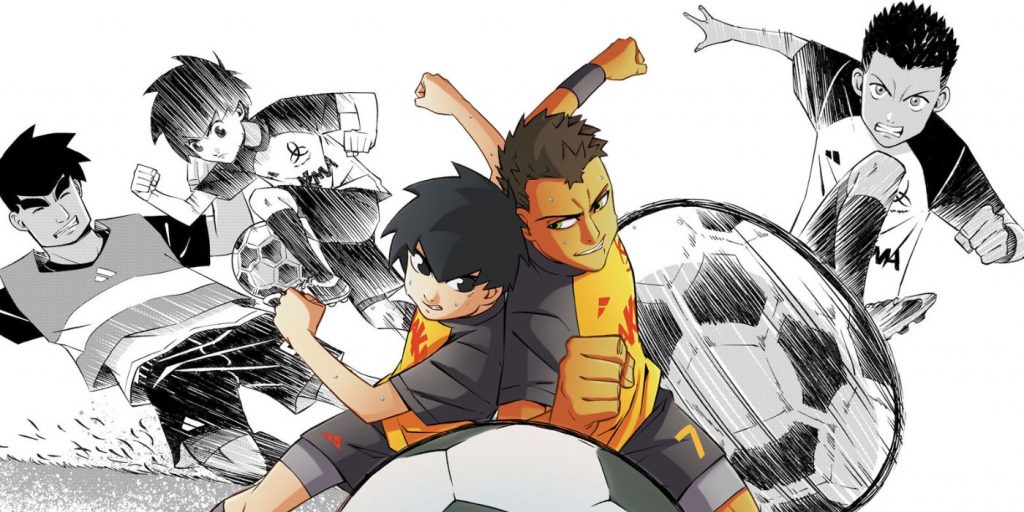Why sports narratives are so effective in reaching young audiences, and how Z United taps into this emotional framework.
Stories shape how we see the world. For young people especially, sport becomes meaningful not just through competition, but through the stories it generates, of friendships, challenges, and small personal victories. Z United taps into this emotional reservoir to connect more deeply with youth and inspire long-term involvement in both sport and social initiatives.
Sport is already a powerful language. But when you add crafted, intentional storytelling, it turns into a conversation. A connection. A spark that can light up ambition or simply offer a sense of belonging. Young people aren’t just looking to participate: they want to feel. And that emotional access point is exactly where Z United positions itself.
The emotional bridge: why stories matter in sport
Sports have always been about more than scores and physical achievement. At their core, they embody stories of struggle, perseverance, triumph, and sometimes failure. These narratives are universal. For young audiences, stories resonate more deeply than raw results because they speak to familiar emotions: fear, hope, belonging, aspiration, rejection, confidence gained or lost.
When a young athlete watches a teammate overcome adversity, they don’t just see a game, they witness a journey that mirrors their own. That identification process is critical. Whether it’s the pressure of a penalty shootout or the exhaustion of the final sprint, these moments live far beyond the field. They become metaphors for everyday challenges: exams, social isolation, job interviews, or even identity struggles.
Z United understands this power and uses it to transform casual interest into genuine engagement. Not just by highlighting success stories, but by embracing complete narratives, ones that show the behind-the-scenes effort, the frustration, the rebuilding. This is where real inspiration comes from: not perfection, but process.
By building narratives around real people, young or senior athletes, coaches, volunteers, Z United taps into what psychologists call “narrative transportation.” When listeners feel transported into a story, their emotional and cognitive engagement skyrockets. They stop being passive observers and start becoming emotionally invested.
This is why even 140-character social posts can stir strong emotions when they capture a compelling moment: a late goal scored with cramping legs, a team huddle before a final, a parent’s tearful pride from the stands. These shared moments become collective memories, and memories drive connection.
Z United doesn’t try to fabricate emotion. It amplifies what’s already there. It gives language, shape, and platform to moments that could otherwise disappear unspoken.
Turning engagement into action
Z United’s formula is simple yet powerful. First, they identify relatable protagonists, players who reflect the diversity and challenges of their audience. Then, they craft a story arc: introducing tension (a match under pressure), development (the effort and teamwork), and resolution (a win, a lesson learned, or even a humorous twist). Each narrative is packaged thoughtfully, whether through concise written recaps, short-form video clips, or visual content posted directly to platforms that youth actually engage with: Instagram, TikTok, or even Discord-based communities.
But the real magic happens when storytelling leads to interaction. Z United invites young audiences to contribute their own stories, comment on real-time updates, and even vote on who they’d like featured next. This participatory model not only keeps attention but also fosters a genuine sense of belonging. Youth don’t just watch: they become authors in the story, shaping its evolution.
This turns a passive community into an active one. It builds digital citizenship through sport. Suddenly, a follower isn’t just a number: they’re a storyteller, a curator, a participant.
Even better: this builds transferable skills. Storytelling in sport naturally teaches empathy, communication, digital literacy, leadership, and confidence. It also helps young people articulate their own experiences, sometimes for the first time.
Ultimately, this engagement model does more than build followers. It builds a community. A community where young people feel heard, valued, and invested. Sport is the stage. Storytelling is the language that turns spectators into stakeholders.

That’s why “sport and storytelling” isn’t just a catchy slogan: it’s a strategic formula for youth engagement, and Z United is living proof. Through their events, campaigns, mentorships and participative content, they demonstrate how emotional intelligence and narrative framing can activate a generation.

